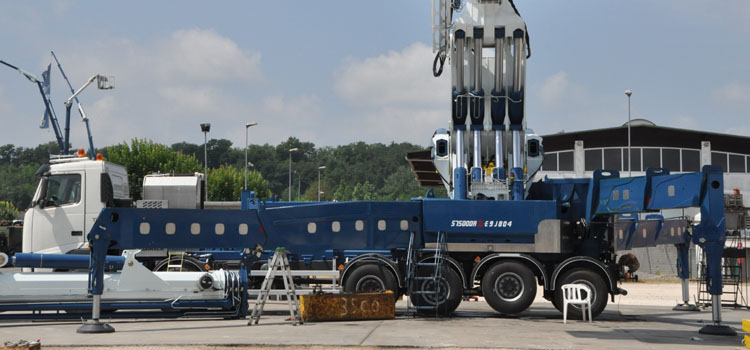 |
| The view from the side shows the dimensions a bit better. Although it looks rather long, the whole truck still has got the shortest possible length for this crane model. |
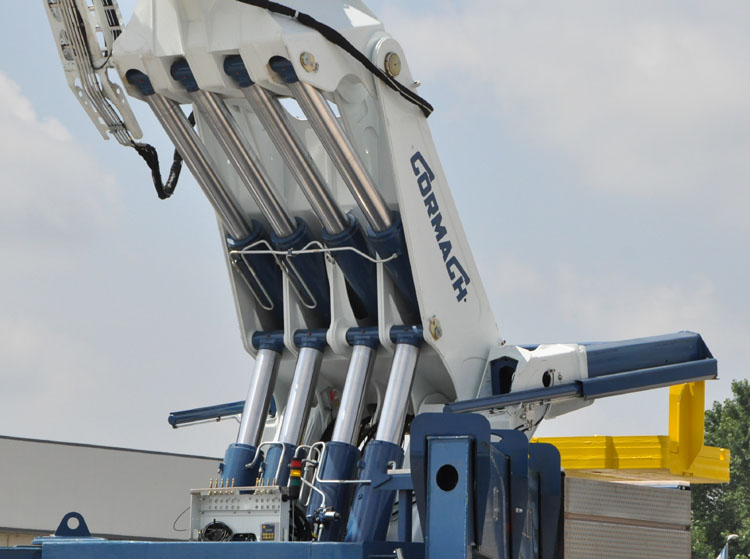 |
| One of the most impressive features, beside the sheer size of the crane, is the setup with the main cylinders. There are 2 sets of 4 cylinders for the main turret aswell for the main boom. This is the first time a knuckleboom crane needs so many. These smaller cylinders keep the construction compact. |
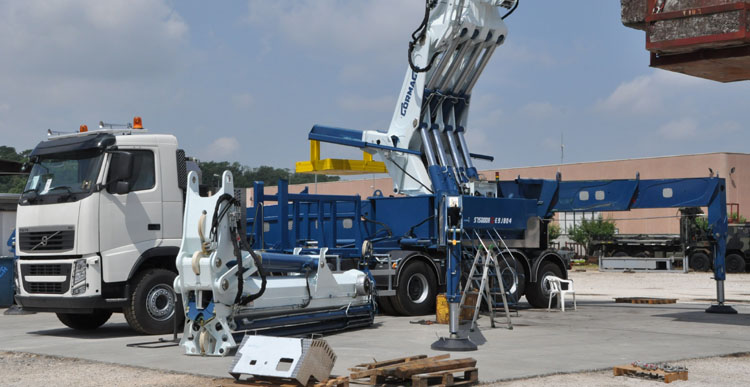 |
| |
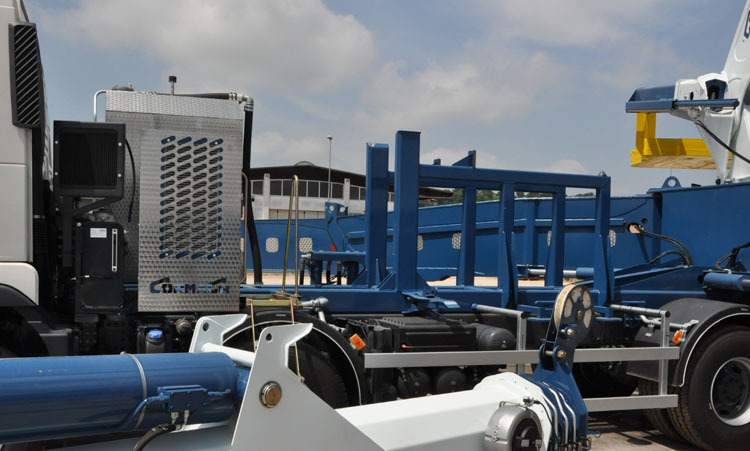 |
| In front of the crane stands this metal rack. The jib will be placed between the rack during transport. When the crane is being set up, it is also used as a support for the base plate of the ballast when adding more ballast to it. This is put on top of it and can then be filled with the neccessary ballast. After putting the ballast on it, the crane rotates and picks up the base plate by extending the ballast arms. |
 |
| Now to the crane itself. It has got 9 extensions with rather long sections. The total outreach of the base crane is 33,45 meters! With maximum ballast, the crane can still lift an impressive 8,3 tons at that distance. At close range it will lift a maximum load of 56 tons at 7 meters. The maximum load in the table is 80 tons at a little over 4 meters distance, therefore the boom has to be in an upward angle of about 45°. |
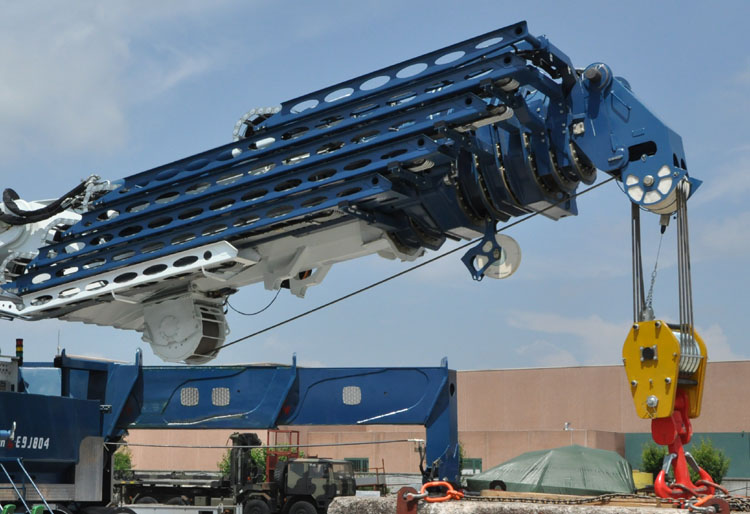 |
| The main boom doesn't have a fixed hook installation anymore. The end of the boom has a mounting plate for any necessary tool, like a head with sheves in this case. It has got 6 sheves, giving 12 lines to the hook block. Together with the 4 tons winch that hangs underneath the boom, this gives a maximum winching capacity of 48 tons. |
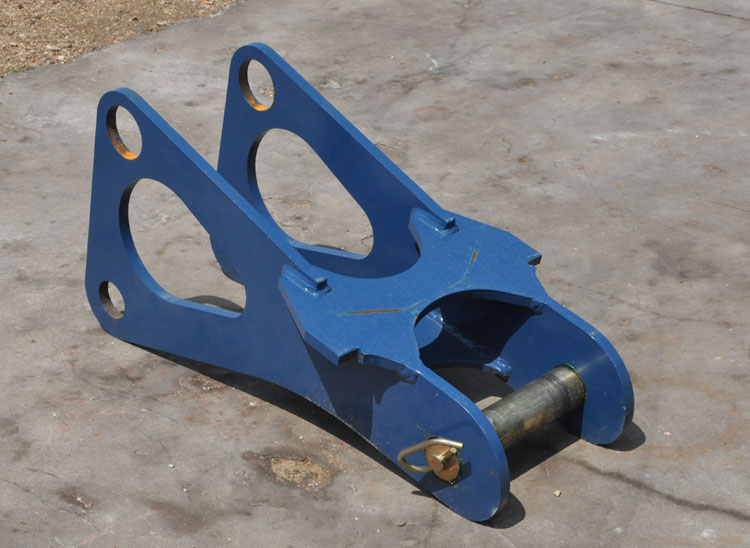 |
| If you don't use the winch, but want to operate the crane like a classic knuckleboom with a fixed hook, then you have to install this head onto the boom. The big pin is the place to connect the hook. |
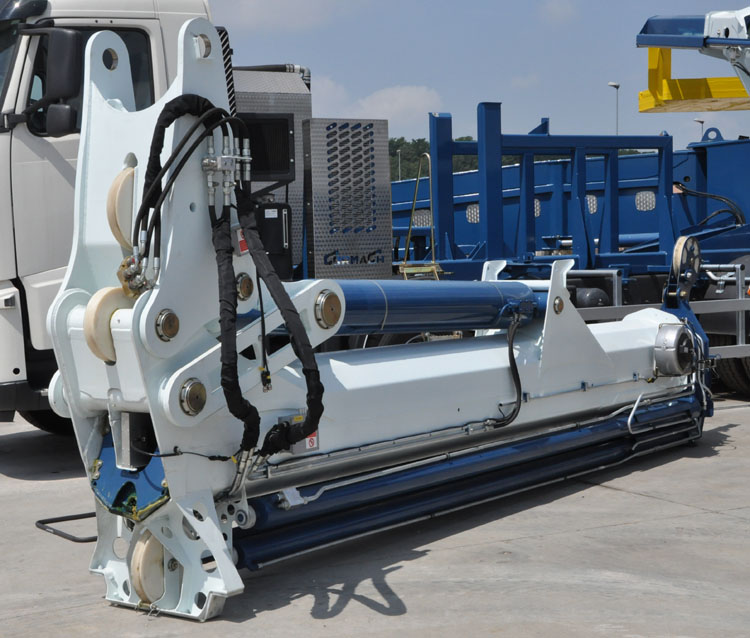 |
| Here we see the really big jib, it is called the J804. It has got an amazing capacity of about 80 t/m! It extends 4x and gives the crane an additional 24,4 meters of outreach. This means that the total outreach of this crane is 57,84 meters with 1600 kg capacity. The jib has got a maximum capacity of 12,1 tons, it can lift that load up to a heigt of about 40 meters! If the hydraulic outreach is still not enough, you can get 2 manual extension on the jib. This gives a maximum outreach of 66,88 meters, or about 71 meters of height! The jib can bend upwards at a 14° negative angle. |
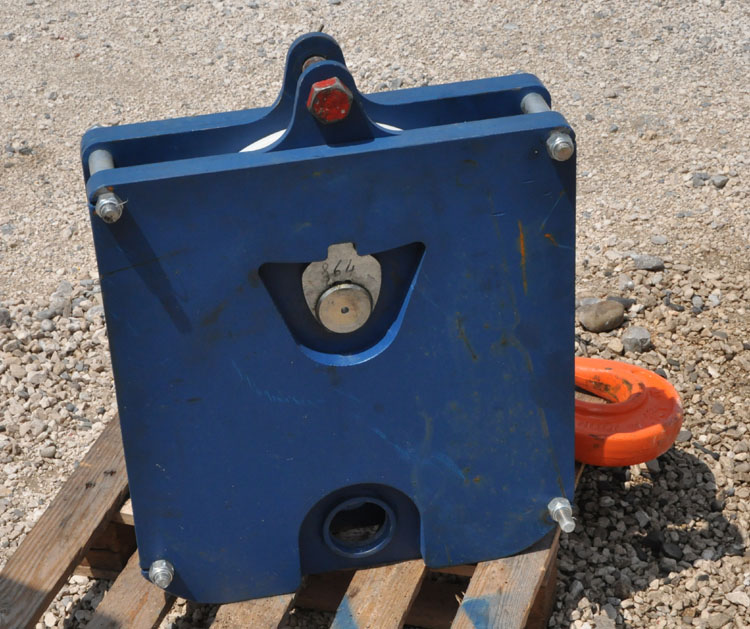 |
| This is the block that has to be used with the winch when the jib is installed. |
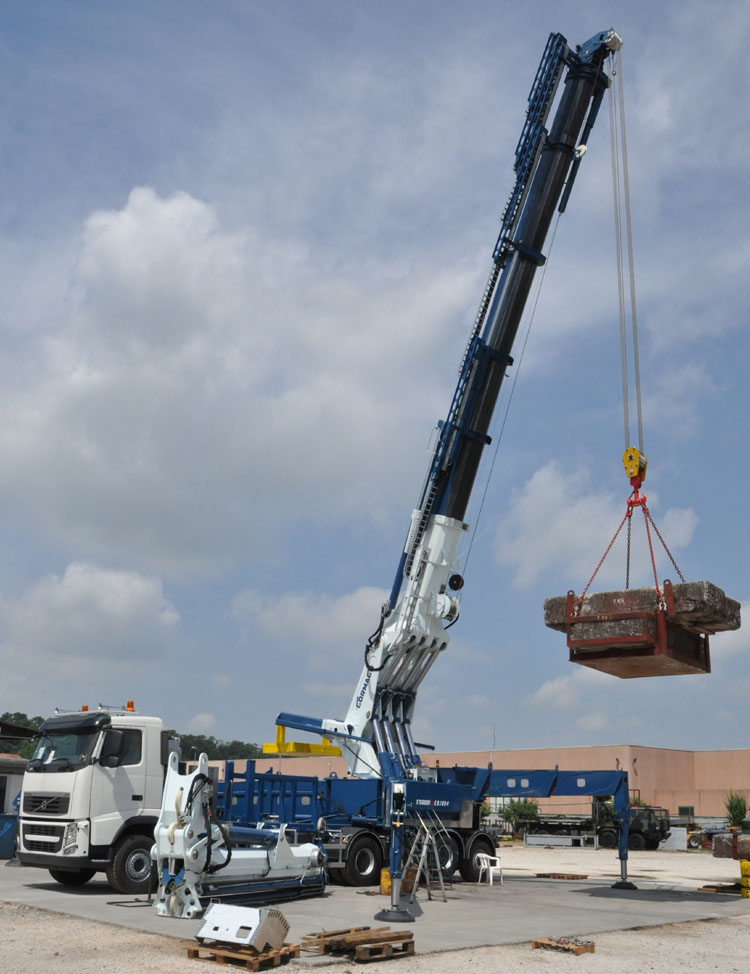 |
| And now some lifting action. As time was limited that day, it didn't go through all the configurations. So here it is lifting a total test weight of 32 tons! That load can be lifted (with max. ballast) at about 12 meters distance. |
 |
| One of the main advantages of this type of crane is that, even with these kind of loads, the crane can still be reconfigured. So it is no problem to extend or retract the boom or change the angles on the main boom and turret. Most current telescopic cranes cannot be extended or retracted during the lifting of heavier loads. |
 |
| With the jib in place you really get an impressive machine, as the base crane will bring the jib up to a height of 38 meters. So you can work beside buildings this heigh and still go horizontal with the full length of the jib. With the main boom straight up and a fully horizontal extended jib you can reach almost 28 meters out of the midle of the crane with 1,85 tons of capacity. This is really a big step forward, as even the longest knucklebooms currently stop at about 30 meters tilting height for the jib. |
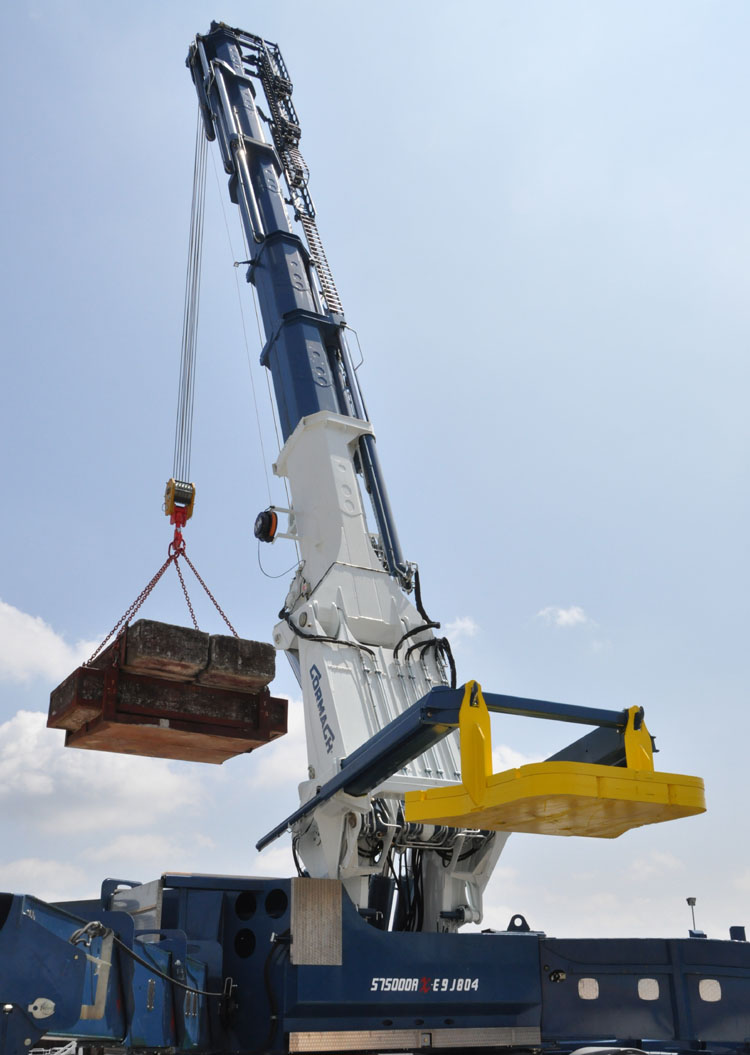 |
| The bending of the main boom is kept to a minimum, as you can see here. The impressive load of 32 tons doesn't seem to bother the crane. |
 |
| Here it seen with the main boom fully extended. All 9 extensions are used, the load used here is only 6,5 tons. |
| |
|